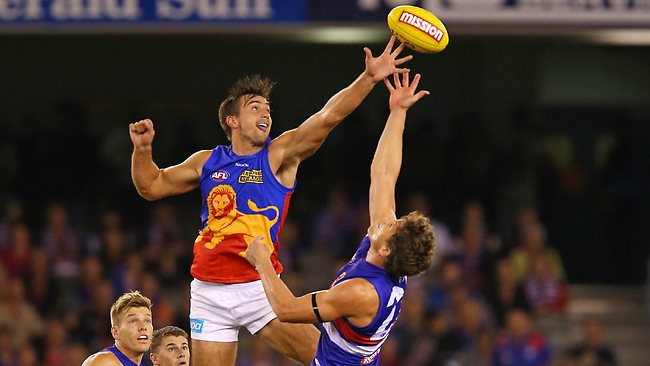At all levels of junior footy, you should rotate your players through a variety of positions. However, there will be situations where some players are obviously suited to better to key positions. As we still want to rotate players through all areas of the ground, it is also important to consider teaching some of your players some really specific skills.
The ruck is one of those positions. Furthermore, the on-ballers who play near the ruck are just as important. Developing a ruckman from a junior level can make a huge difference as the player gets older, because it’s usually one of those positions just reserved for the tallest player, without much education. The on-ballers also need to learn how to play with the ruckman, rather than just sent our there and try and win their own ball.

Fundamental Teachings to young Ruckman
One of the most important things to teach a young ruckman is how to jump properly. This may seem trivial but a correct jumping technique not only increases the effectiveness of the ruck contest, but helps protect the player from some of the collision injuries that may occur.
Jumping with a high knee will increase the height of the jump, and allow for the player to potentially launch of the opposition. Jumping off two feet can expose the front of back of the player, potentially leading to heavy impact to unprotected areas.
Learning to jump from both sides – Naturally, players will have a preferred leg they want to jump off. However, teaching them to jump off both can really help their ability to change jumping angles throughout a game. Being able to change the starting position and launch angle can help the ruckman get an edge over their opponent as the opposition cannot get a consistent read on their “favourite” jump.
Being effective around the ground – Teaching your ruckman to be effective around the ground is essential to development. Think AFL ruckman such as Max Gawn and Todd Goldstein. They can take marks in defence, push forward and kick goals and overall have an overall impact on the game, rather than just the stoppages. Depending on your games plan, the best way to start teaching a ruckman is to encourage them to have a defensive mindset. If the opposition gets possession of the ball, they need to try and push back and plug holes in the defence. When their team gains possession, they then need to try and be a target moving the ball forward.
Fundamentals to young on-ballers
Rather than just tell your talented players to see ball get ball, allow them to start working with the ruckman to try and hit it to specific places. The on-baller can therefore, start in specific areas around stoppages to try and develop a “play” with their teammates.
Play as a team – Sounds simple, but make sure your players are using the whole team. Blocking, handballing and creating space should be encouraged just a s much as trying to get the ball. Players do not need to do everything themselves, so always encourage players to use their teammates who are in the better positions.
Communicate – Get players to learn the visual and verbal communication techniques around stoppages. There is an endless list of ways to do this, but probably the easiest to implement in junior is the clock system for the ruck. Get players to also get to stoppages early (after a goal) and quickly discuss where the attempted tap is going to go. Around the ground, if possible have some ways in which players communicate where the ball is trying to go. At the very least, get players to communicate the position of their teammates around the stoppage.
Developing Weaknesses – It almost goes without saying, developing the weaknesses early will develop the player as a whole. Some of the issues with young on-ballers is getting them to kick effectively with both sides, think Sam Mitchell.





